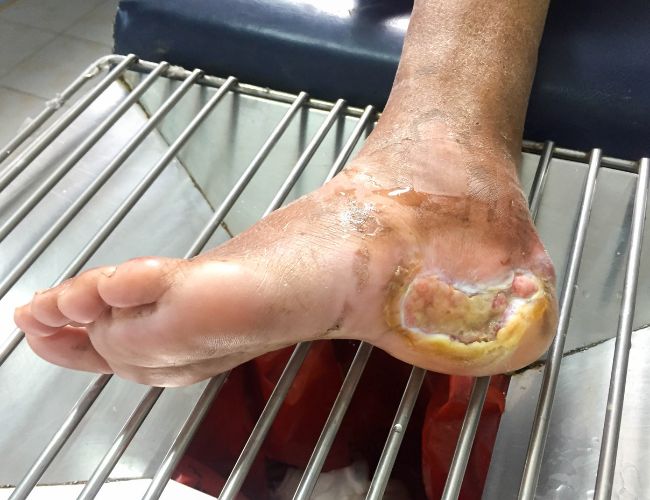- Mon - Sat 08:00 AM - 08:00 PM
- Call Us: +91 77603 00622
- himasglobalhopital@gmail.com

People with diabetes for a long time often have problems with their feet. They may develop foot sores, infections and deformities more easily.
If not treated in the beginning, a foot ulcer on a person who is suffering from diabetes can get infected. In many cases, the foot ulcer has spread so wide surgeon must remove a toe or part of the leg to prevent the spread of infection to other parts of the body.
Who might get infected with diabetes-related foot conditions?Foot problems often occur in people with diabetes who is suffering from long time, especially among those who have:
Treatment may include:
Depending on how severe the infection is, the doctor can also recommend hospitalization and surgery. If the infection is wide, amputation is necessary to prevent infection from spreading to other parts of the body.
When should a patient seek medical care for diabetes-related foot pain?If a person has diabetes, talk to the doctor right away if the patient experience: